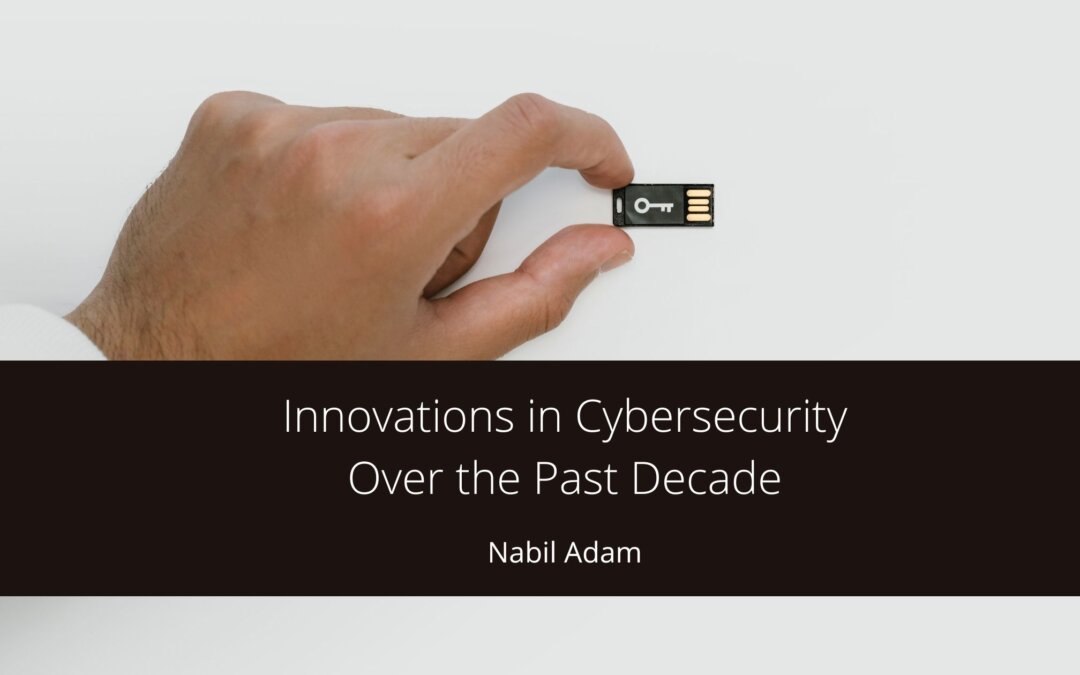Cybersecurity threats have become more sophisticated and frequent in the past decade, prompting organizations to invest in innovative solutions to protect their networks and data. The cybersecurity industry has undergone significant advancements, from artificial intelligence to blockchain technology, to keep up with the evolving threat landscape.
One of the most significant innovations in cybersecurity over the past decade is using artificial intelligence (AI) and machine learning (ML). AI and ML are being leveraged to detect and respond to cyber threats in real-time, providing security teams with a more proactive approach to cybersecurity. Security teams can uncover possible threats before they do damage because of their ability to scan massive volumes of data and spot abnormalities.
Blockchain technology utilization is a significant advance in cybersecurity. The distributed ledger technology, blockchain, offers a safe and open method for storing and exchanging data. It is used in cybersecurity to strengthen data protection and stop data breaches. By decentralizing data storage, blockchain technology makes it difficult for hackers to steal information. Additionally, it offers a clear and safe method for data sharing between parties, which facilitates identifying and averting cyberattacks.
The ability to store data on any device at any time is due to cloud computing technology. This handy tech also poses security risks. Cloud providers have implemented cutting-edge security features to combat cyber threats, including data encryption and multi-factor authentication. To guarantee that their security measures are current and compelling, cloud providers may also provide continuous monitoring and upgrades.
IoT devices are becoming increasingly popular in homes and businesses but are also a prime target for cybercriminals. With internet access, these devices become a gateway for hackers. To address this, IoT manufacturers are implementing advanced security features, such as device authentication and data encryption, to protect against cyber threats.
The use of biometric authentication is another advance in cybersecurity. To confirm identification, biometric authentication employs distinctive physical traits like fingerprints or face recognition. This technology is becoming more common in mobile devices. Since cybercriminals find it difficult to duplicate a person’s bodily characteristics, biometric authentication is more secure than conventional password-based authentication.
Virtual private networks have gained popularity as a cybersecurity breakthrough. VPNs provide a safe and secure encrypted connection between a user’s device and the internet, avoiding data eavesdropping by online criminals. Remote employees often use VPNs to protect their ties to corporate networks, but they are also frequently used by individuals to safeguard their online surfing privacy.
The past decade has seen significant innovations in cybersecurity to address the evolving threat landscape. The cybersecurity industry has made tremendous strides to protect organizations from cyber threats, from AI and blockchain technology to cloud computing and biometric authentication. While these innovations have improved the security landscape, cybercriminals continue to find new ways to seek out vulnerabilities. Organizations must consistently upgrade their approaches, including advanced technologies, employee education, and regular security assessments.
As the threat landscape evolves, the cybersecurity industry will likely continue to innovate to stay ahead of cybercriminals. Organizations must remain up-to-date with the latest trends and technologies in cybersecurity to ensure that their networks and data remain protected. By investing in innovative solutions and implementing best practices, organizations can mitigate the risk of cyber-attacks and protect their valuable assets.

